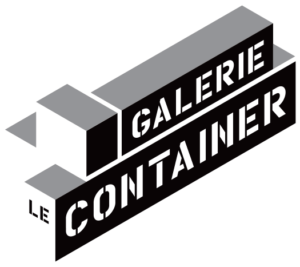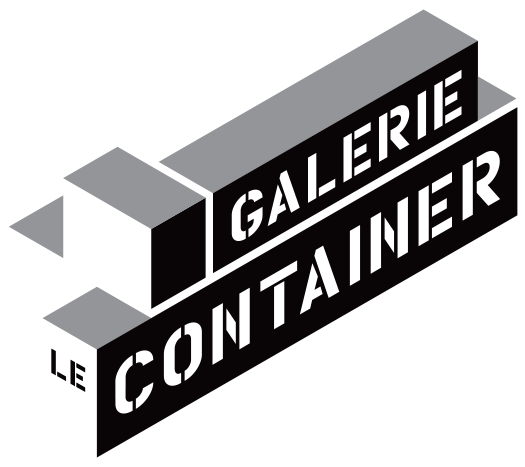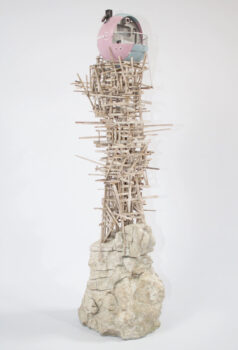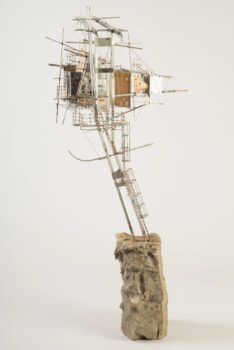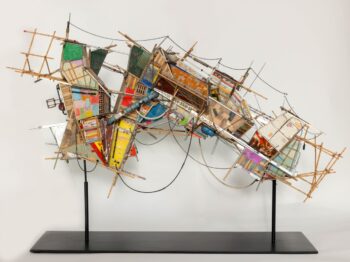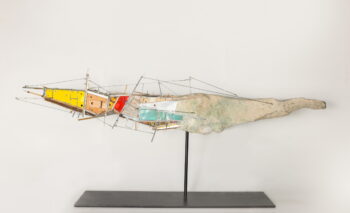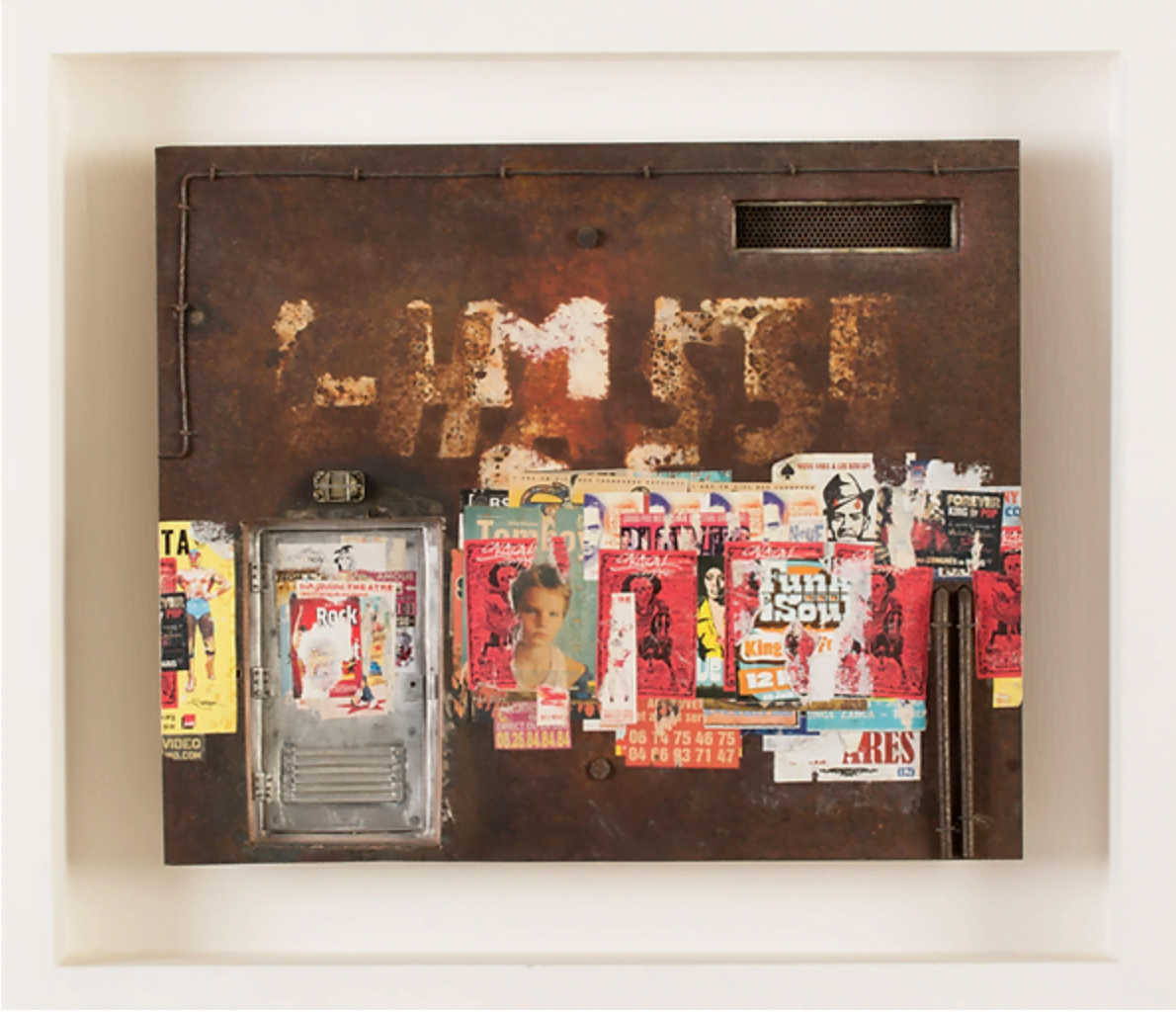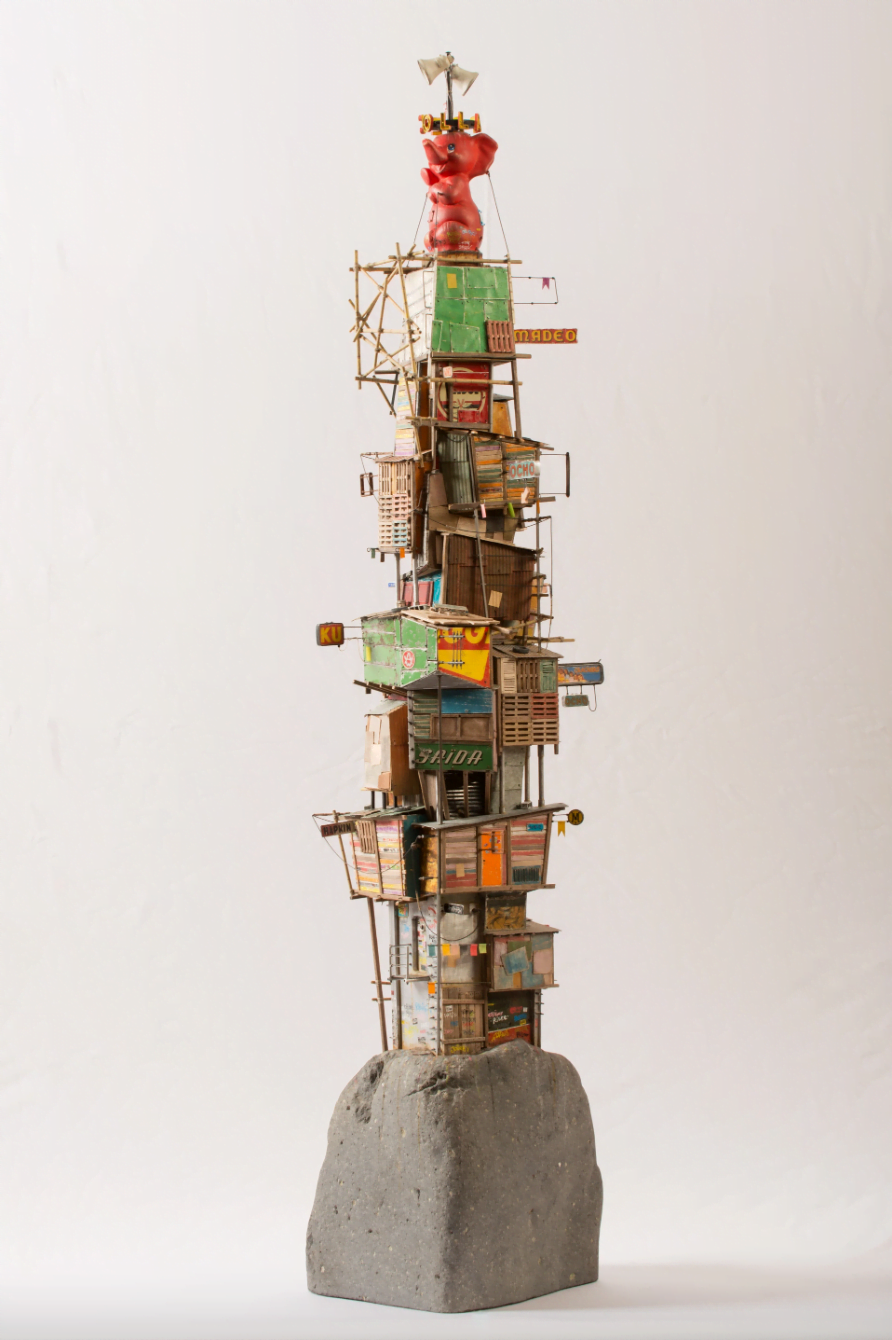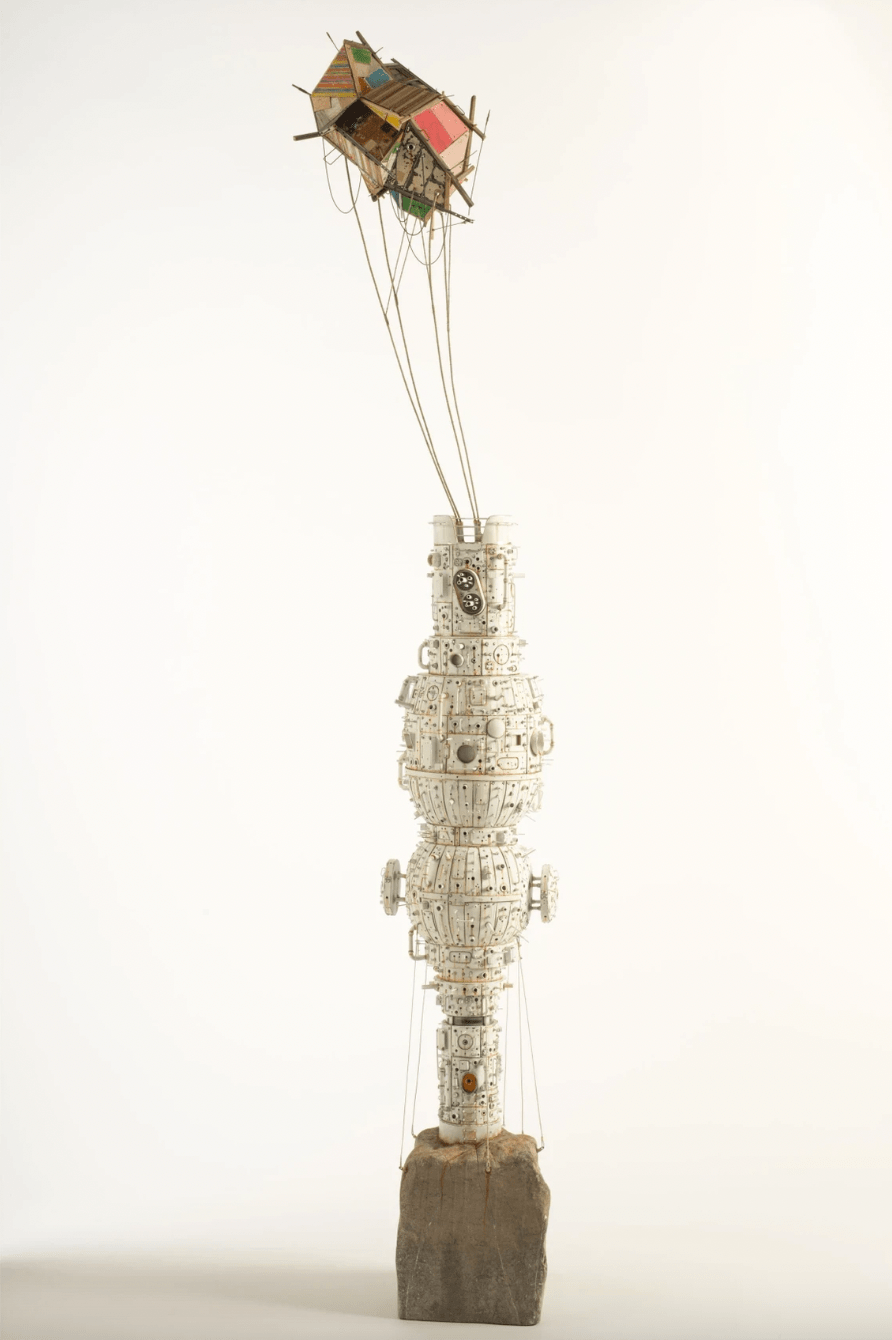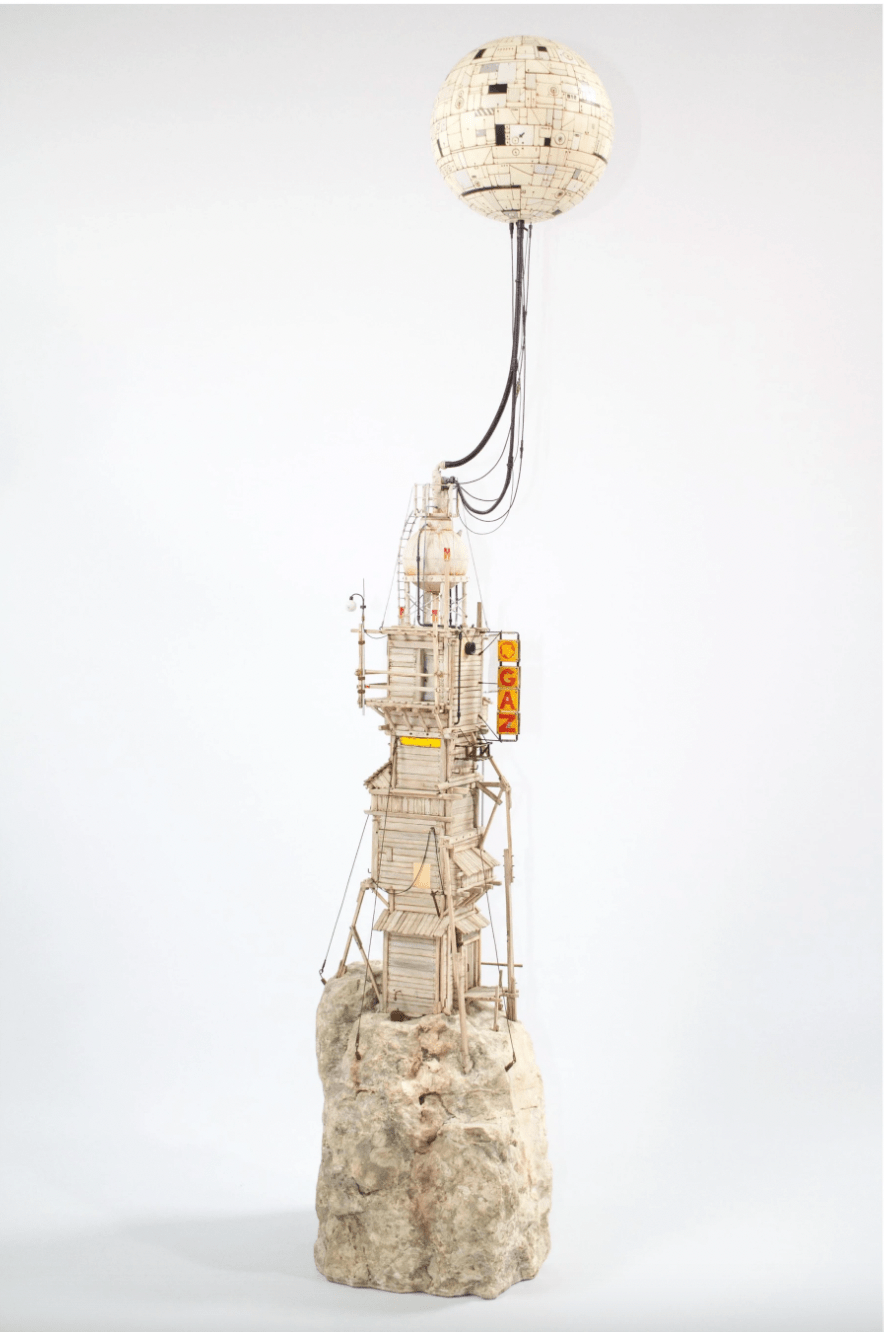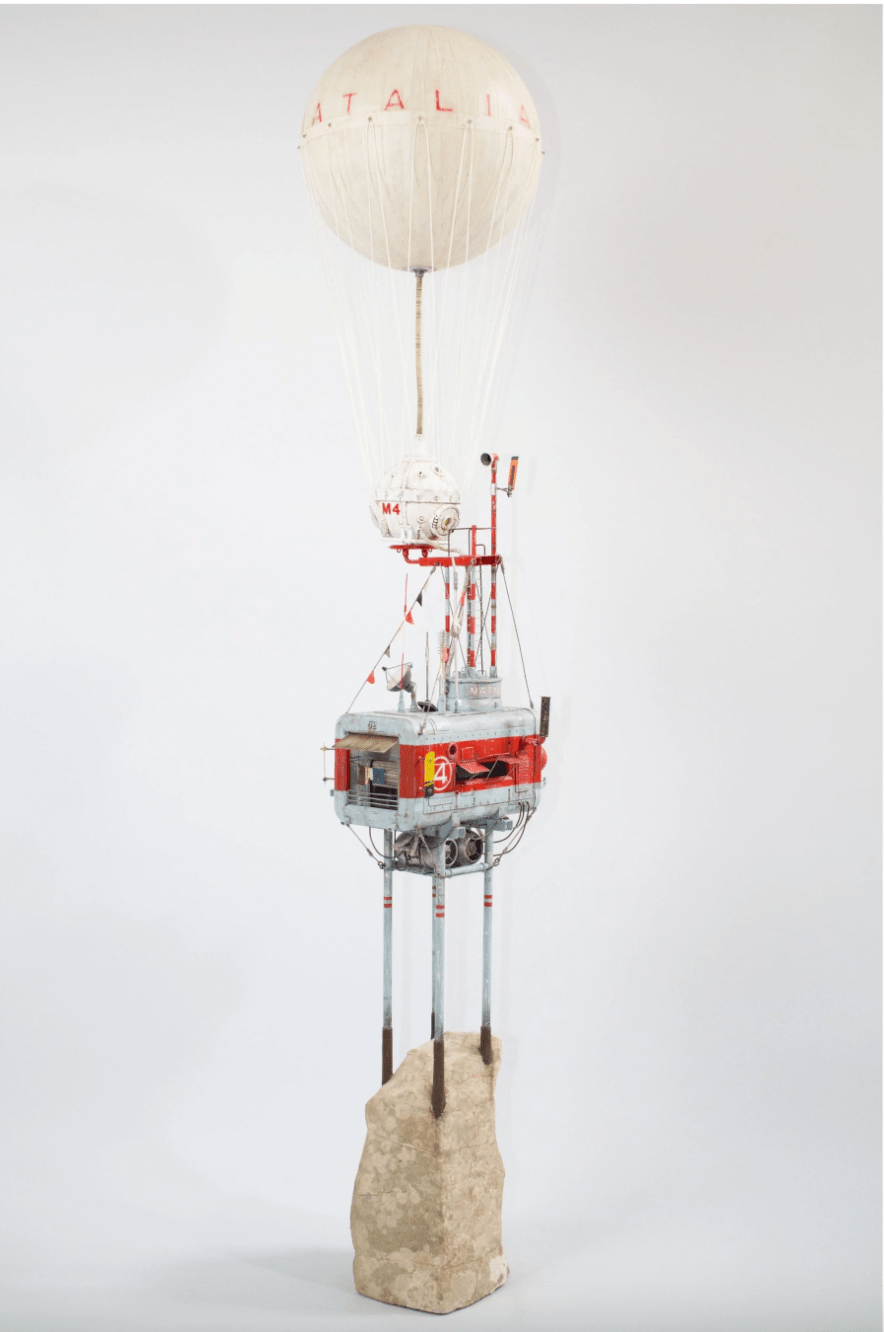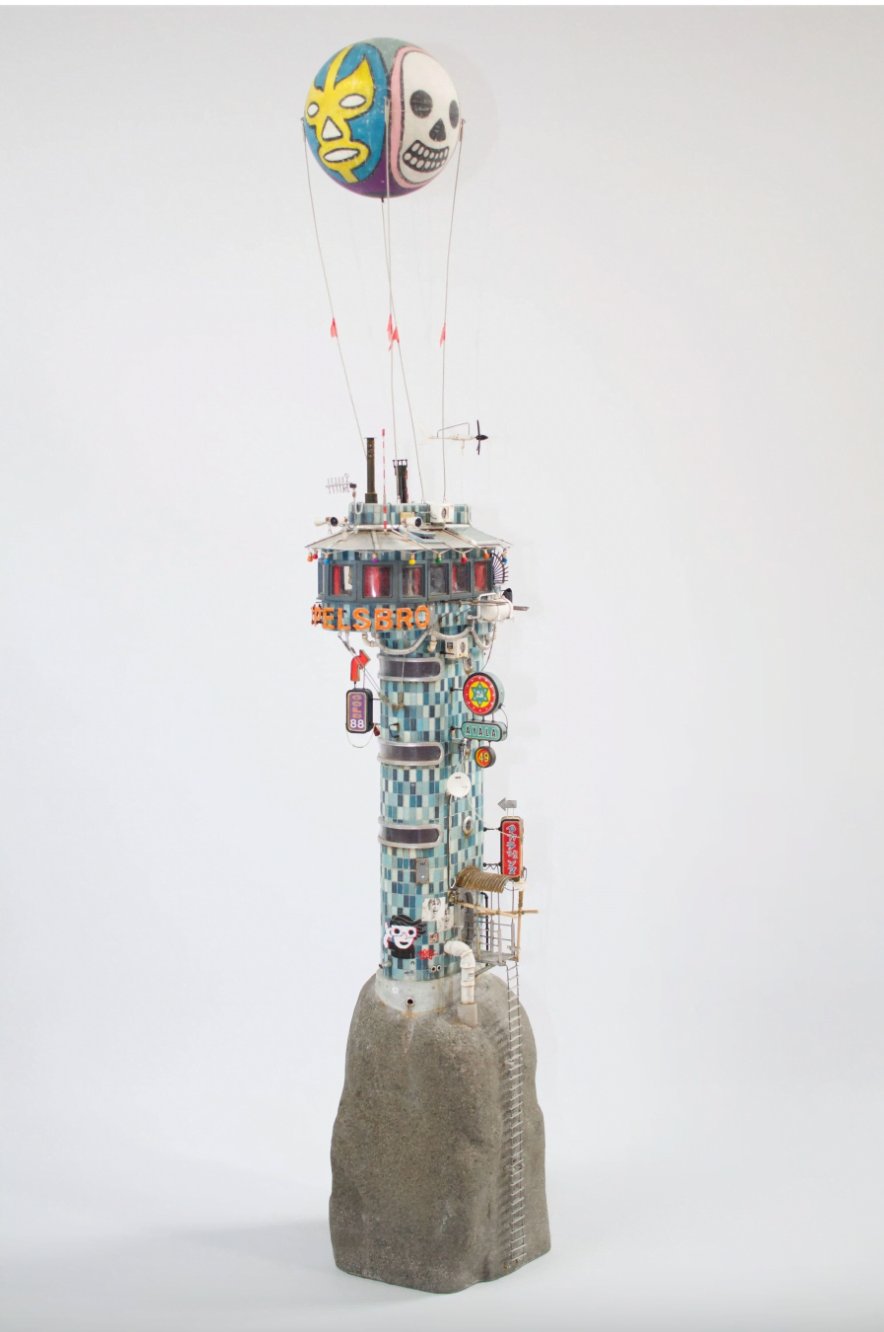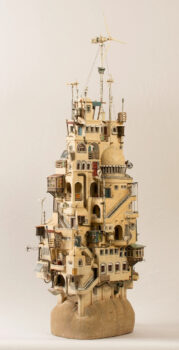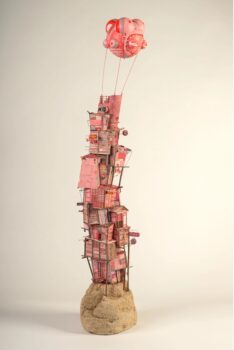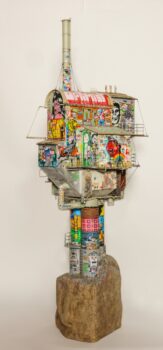Born in 1969
Charles Malherbe's sculptures are isolated reefs on which a sort of architectural patchwork has agglomerated, unlikely refuges marked by the passage of time and the multiple remodeling of the communities that inhabit them. Others are like observation stations, relics of civilizations that have recently collapsed. It's as if Miyasaki had been asked to shoot the next episode of Mad-Max.
They form the basis of an open-ended narrative whose bricks would be demographic density, collapse, resilience, the choice and routing of energy sources...
His technique is more akin to photographic work that focuses on detail, miniaturization being less a performance than a subterfuge. He uses a variety of materials (stone, wood, metal, sheet metal, cardboard, plastic) to achieve the most realistic rendering possible.
Charles Malherbe draws his inspiration from a variety of influences: Michael Wolf and the Bechers for photography and architecture, Ian MC Que and Simon Stalenhag for illustration, and Hiroyuki Hamada for sculpture, among others.
His compositions are sometimes covered with graffiti from his imagination or borrowed from Street Art artists he admires, anchoring his works in contemporary history. These include Broken Fingaz, Saner, Neuzz, M. Chat, Miss. Tic, Beastman & Phibs, Muretz. This is a real tribute.
Born in 1969 in Le Mans, Charles Malherbe studied at the Beaux-Arts in Nantes, before emigrating to the south of France in 2001.
At first, he devoted himself to creating humorous scenes in small shop windows. He then moved on to other themes, drawing inspiration from archaeology and ethnological accounts. In a natural progression, his creations today evoke a kind of future anticipation.
